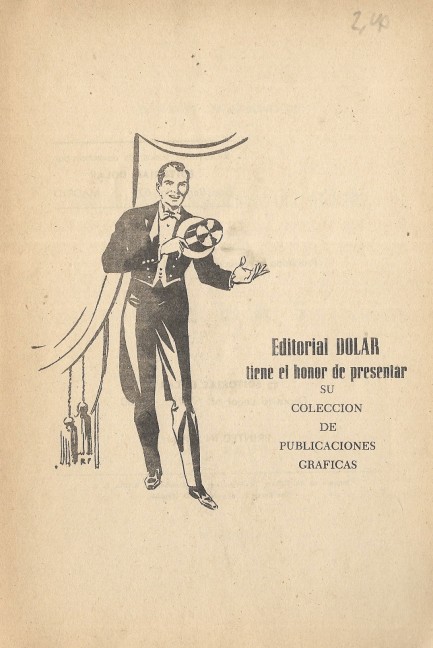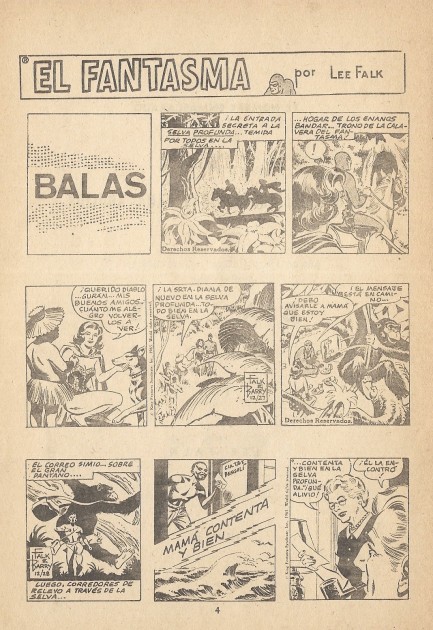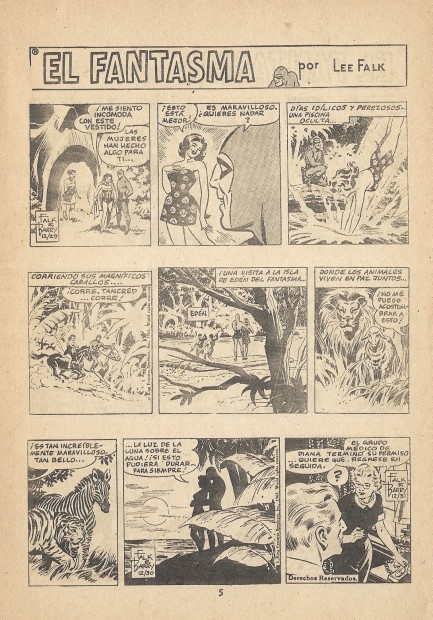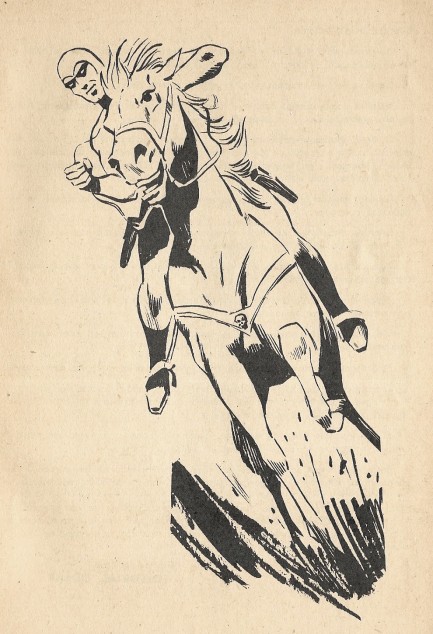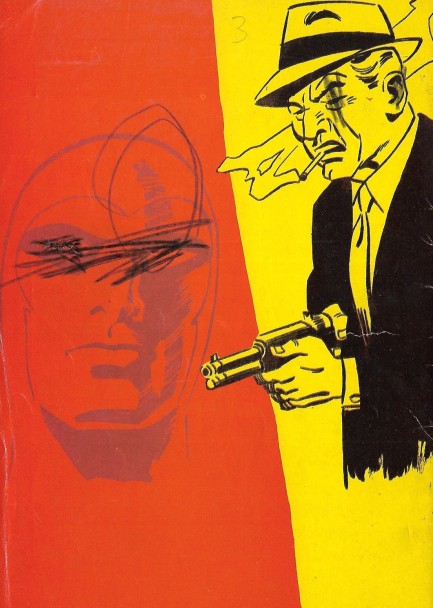| Vintage Pulp | Aug 27 2022 |

Before Superman, Batman, and Spiderman there was the Phantom.
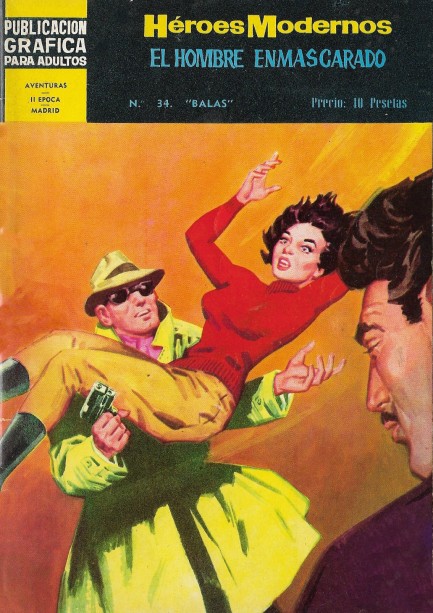
We picked up a copy of El Hombre Enmascarado late last year when we were passing through Granada, and in typical fashion, it's taken us almost a year to scan anything from it. But never let the early become the enemy of the late, or something to that nonsensical effect, so above you see the cover of issue thirty-four, written and illustrated by Lee Falk and published in 1960 by Editorial Dolar as part of its Héroes Modernos series. However, Dolar was merely translating a U.S. serial. There the main character was known as the Phantom, originating as a daily syndicated comic strip. This episode is titled “Balas,” or “Bullets.” The only credit inside is for Falk, but we're actually unsure whether he was the sole hand behind this. Although Falk was an artist, Phantom strips are generally credited to three cartoonists—Ray Moore, Wilson McCoy and Seymond Barry.
Falk invented the character of the Phantom in 1936, which makes him a precursor to modern superheroes. He even predates Superman, who came in 1936, and Batman, who arrived in 1940. His background is fun. During the age of piracy, Sir Christopher Standish was killed in an attack that his son survived. That son swore to fight evil in his father's name, and pledged that his descendants would too. So each new Standish generation inherits a costume and fights crime, perpetuating the idea among the public that the masked vigilante is immortal—a phantom. In addition to the costume he carries two pistols and two rings: one bears the image of a skull, which he uses to mark foes by slugging them in the jaw. The other ring is a peace symbol. His sidekick is a wolf and he also sometimes rides a white stallion. We've scanned a few interior pages plus the slightly defaced rear cover for your enjoyment. And perhaps—who knows?—we'll have more from the masked man later.
